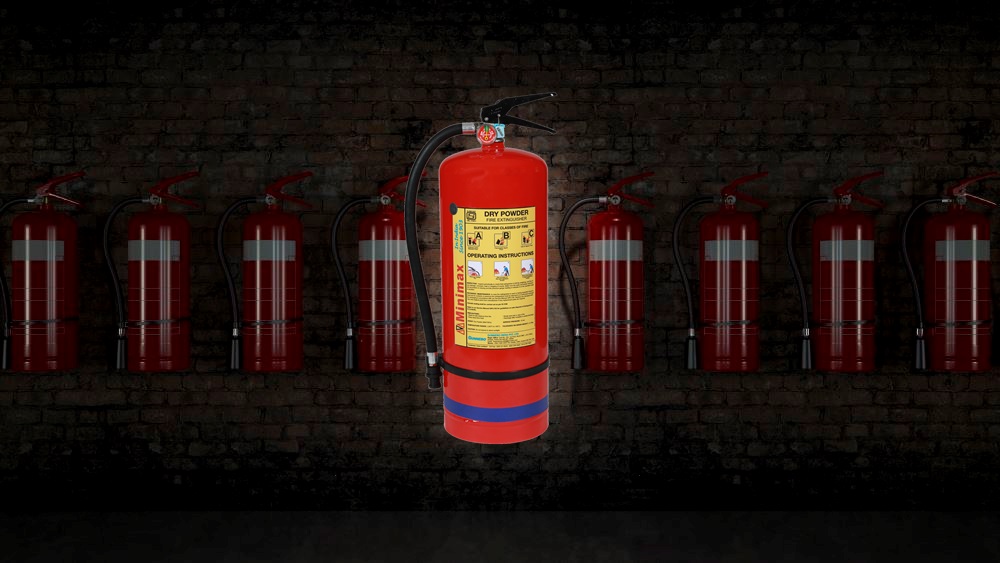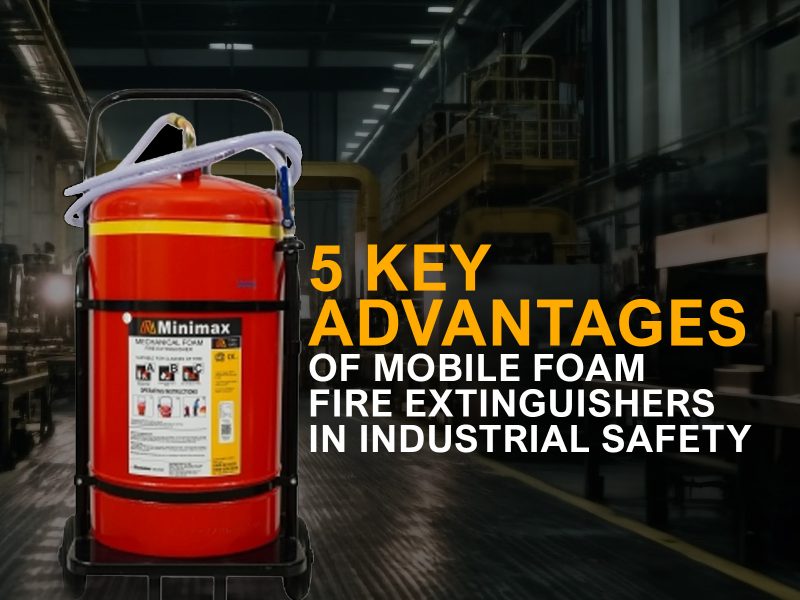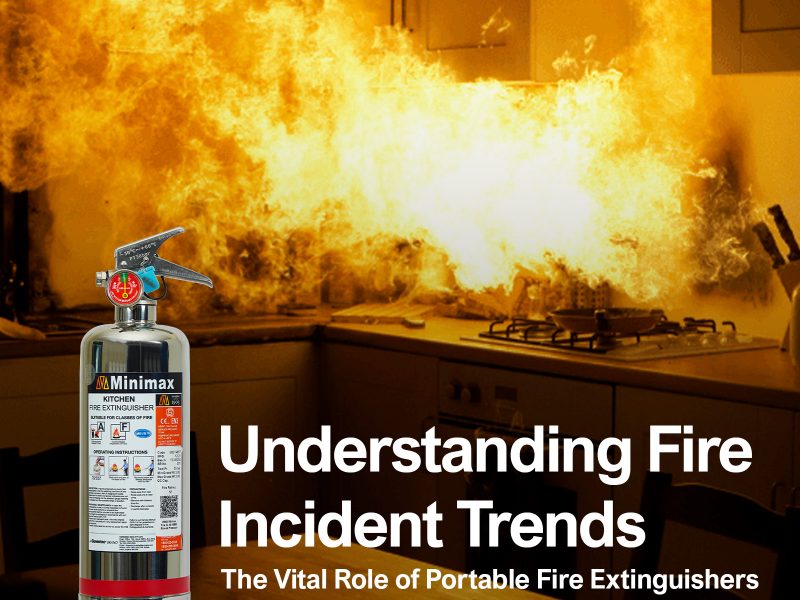
Fire extinguishers are considered to be one of the most revolutionary inventions in our world today. The invention of fire extinguishers has helped in controlling the fire at an initial stage. These equipment’s come in handy during a fire hazard at home, office or any other place.
The fire extinguisher we see today is an evolved version of the first prototype which has undergone many modifications that occurred over the years. As the fire extinguishers evolved into an exceptional modern-day design, let us walk down the memory lane to know Fire Extinguishers Evolution.
History of fire extinguishers
Ctesibius of Alexandria – the father of Pneumatics developed the simple fire extinguishing equipment way back in 200 BC. It was in the form of a hand-pump that functioned to deliver water to extinguish the fire.
The Russians used water buckets to extinguish the fire by forming a bucket chain where they passed water buckets to extinguish the fire. When that seemed exhausting, there was the invention of ‘squirts’ during middle age.
Syringe-like device (Squirts) used for extinguishing
During the Middle Ages, Squirts (syringe-like device) were used to put out the fire. This equipment helped to put out fires by the jet spray that pushed water with pressure application. The principle of operation was quite simple. Water extraction happened using a nozzle, which was then jet sprayed onto the flames. Squirts found their use in the Great Fire of London in the year 1666.
The first version of portable fire-extinguisher
In 1723, chemist Ambrose Godfrey patented the first fire extinguisher. It contained a mixture of gunpowder and a fire-extinguishing liquid inside a pewter chamber. It had a system of fuses that ignited to explode the gunpowder and released the liquid.
A primitive model of modern-day fire extinguisher was invented in 1819 by British Captain George William Manby. This model was composed of a 3 gallons copper vessel filled with pearl ash or potassium carbonate solution developed under the compressed air.
The cartridge-operated extinguisher was invented by Read & Campbell of England in 1881, which used water or water-based solutions. They later invented a carbon tetrachloride model called the “Petrolex” which was marketed toward automotive use.
Soda-acid extinguisher
In 1866, the soda-acid extinguisher variation was created by Francois Carlier. He patented this version and it mixed water and sodium bicarbonate with tartaric acid. Sodium bicarbonate got recognized as a potential and best-suited source of extinguishing media. It led to the development of the soda-acid fire extinguishers that contained 1 – 2 gallons of water as liquid with sodium bicarbonate dissolved in it. Additionally, it included an acid vial containing sulfuric acid. The principle of this fire extinguisher involved the simple acid-base reaction. When an acid reacts with a base, there is a release of carbon dioxide gas. The soda-acid extinguishers carried a plunger for operating this extinguisher. The mechanism was to pull the plunger, which discharged acid onto sodium bicarbonate to produce CO2. The CO2 gas thus generated was released from the nozzle to extinguisher the fire.
Cartridge Operated Fire Extinguishers
The cartridge-operated extinguisher was invented by Read & Campbell of England in 1881, which used water or water-based solutions. They later invented a carbon tetrachloride model called the “Petrolex” which was marketed toward automotive use.
Foam extinguishers
The chemical foam extinguisher was created by Russian engineer Aleksandr Loran in 1904. Loran’s extinguisher contained sodium bicarbonate in water and aluminium sulphate. When mixed together, the liquids turned into foam and proved to be an effective way of putting out the fire. These fire extinguishers generated foam when turned upside down. The nozzle mounted on the main cylinder was used for foam discharge.
Fire extinguishers have continued evolution through the years to comply with the best safety practices. While the foam type fire extinguishers were useful, people still found them hard to operate.
CTC fire extinguisher
Next came the Carbon Tetra Chloride extinguisher, developed in the year 1912 by Pyrene. CTC extinguisher was the first fire extinguisher model controlled by a hand pump made of brass or chrome. The hand pump was integrated into the liquid vessel for easier dispersion of liquid onto the target. These fire extinguishers contained CTC as a liquid extinguishing media which vaporized when discharged. The agent used to put out the flames by an interruption in the chemical reaction. Carbon tetrachloride was suitable for liquid and electrical fires and was popular in motor vehicles until the late 1950’s, when it was withdrawn because of its toxicity. Additionally, when used on a fire, the heat converts CTC to Phosgene, formerly used as a chemical weapon.
CO2 fire extinguisher
Further developments were made in the 1924, when the carbon dioxide extinguisher was invented in the US by the Walter Kidde Company. It was made in response to developing an electrically non-conductive chemical for extinguishing fires in telephone switchboards. The carbon dioxide extinguisher consisted of a metal cylinder with a wheel valve and a brass hose covered with cotton.
Evolution in 20th Century
In 1928, DuGas (later bought by ANSUL) came out with a cartridge-operated dry chemical extinguisher, which used sodium bicarbonate specially treated with chemicals to render it free-flowing and moisture-resistant. It consisted of a copper cylinder with an internal CO2cartridge. The operator turned a wheel valve on top to puncture the cartridge and squeezed a lever on the valve at the end of the hose to discharge the chemical. This was the first agent available for large scale three-dimensional liquid and pressurized gas fires and was but remained largely a specialty type until the 1950s when small dry chemical units were marketed for home use. ABC dry chemical came over from Europe in the 1950s,
In the 1970s, Halon 1211 came over to the US from Europe, where it had been used since the late 40s or early 50s. Halon and its variants are in the phase-out stage due to its environmental impact. The hydrocarbon-based agents are replaced by zero ODP (Ozone Depletion Potential) and low GWP (Global Warming Potential) such as HFC-236fa, FK-5-1-12, and IG-541The current design of fire extinguishers has evolved to address issues faced while operating. Earlier designs were not user friendly to use. The convenience and performance factored to the innovation of fire extinguishers design.
The modern-day design of portable fire extinguishers provides users with ease of use and performance efficiency while operating on the fire at an incipient stage.
The portable fire extinguishers are available in the below types based on the design and construction parameters.
-
Stored pressure type
In this type of fire extinguisher, the extinguishing media is filled inside the cylinder and then compressed with nitrogen/argon. A squeeze-grip valve assembly mounted on the cylinder body. The squeeze grip handle controls the spring valve. The spring valve helps in discharging the extinguishing agent from the cylinder through the nozzle.
-
Gas cartridge type
A cartridge-operated extinguisher has the extinguishing media is filled inside the cylinder, with a CO2 gas cartridge mounted with the valve assembly internally. The squeeze grip handle punctures the cartridge to pressurizes the extinguisher with CO2 gas to discharges the extinguishing media through the nozzle.
-
Carbon dioxide type
The carbon dioxide is a clean extinguishant, which leaves no residue on the operation. This type of fire extinguisher uses pure carbon dioxide gas as an extinguishing media, filled inside a seamless cylinder at high pressure. The squeeze grip or wheel type operation enables the release of carbon dioxide on the fire.
Fire extinguishers are available in different types based on the types of extinguishing agents used. An extinguisher to be used only for the class of fire as per the suitability. There is no one type of fire extinguisher that is universally acceptable to every fire class.
Below are the different extinguisher types based on agent and suitability on fire classes.



